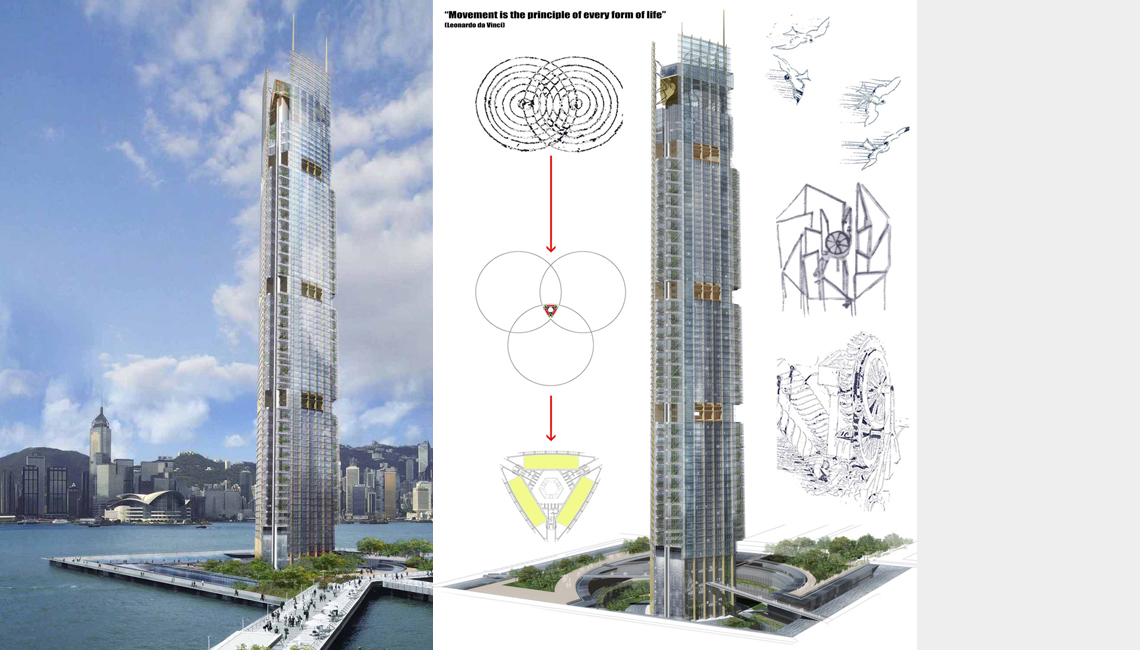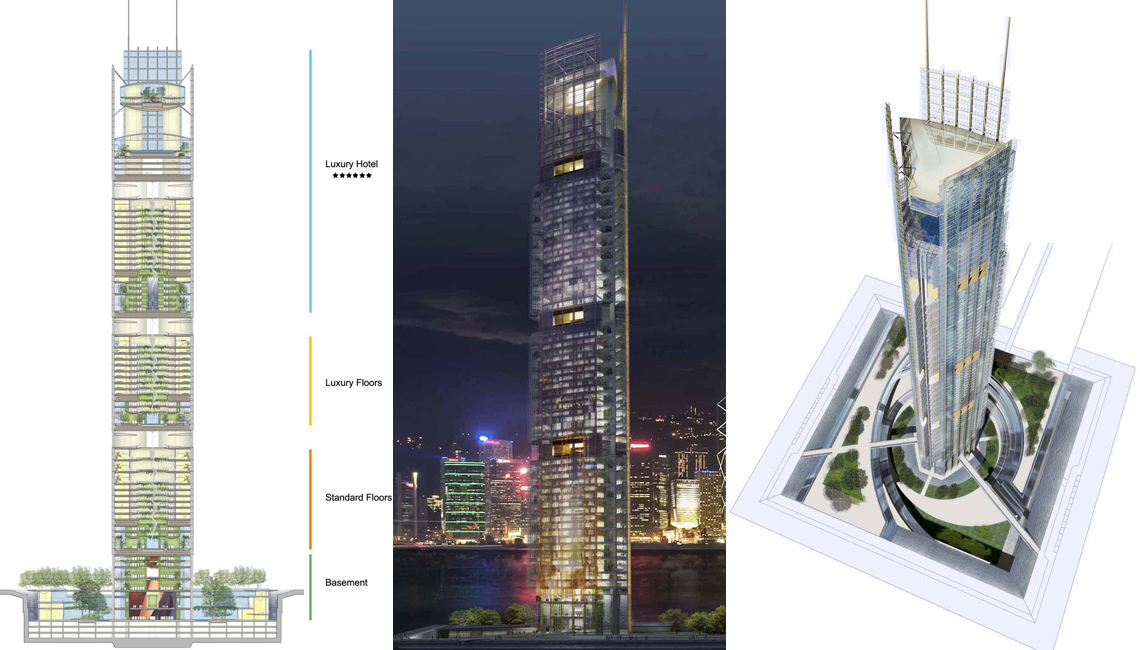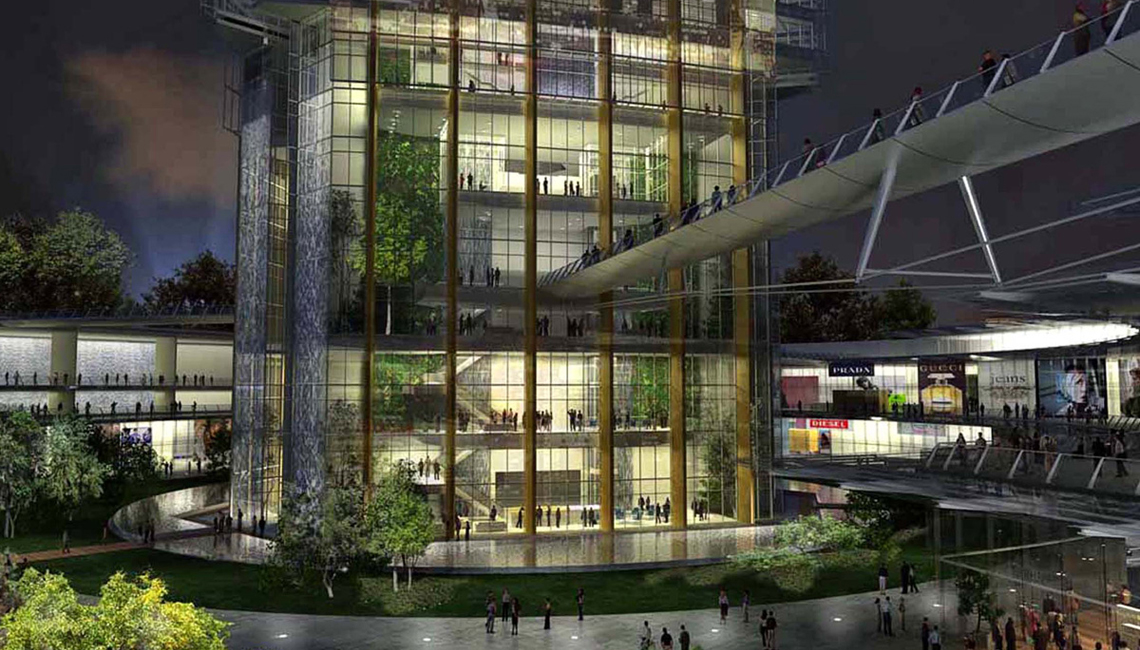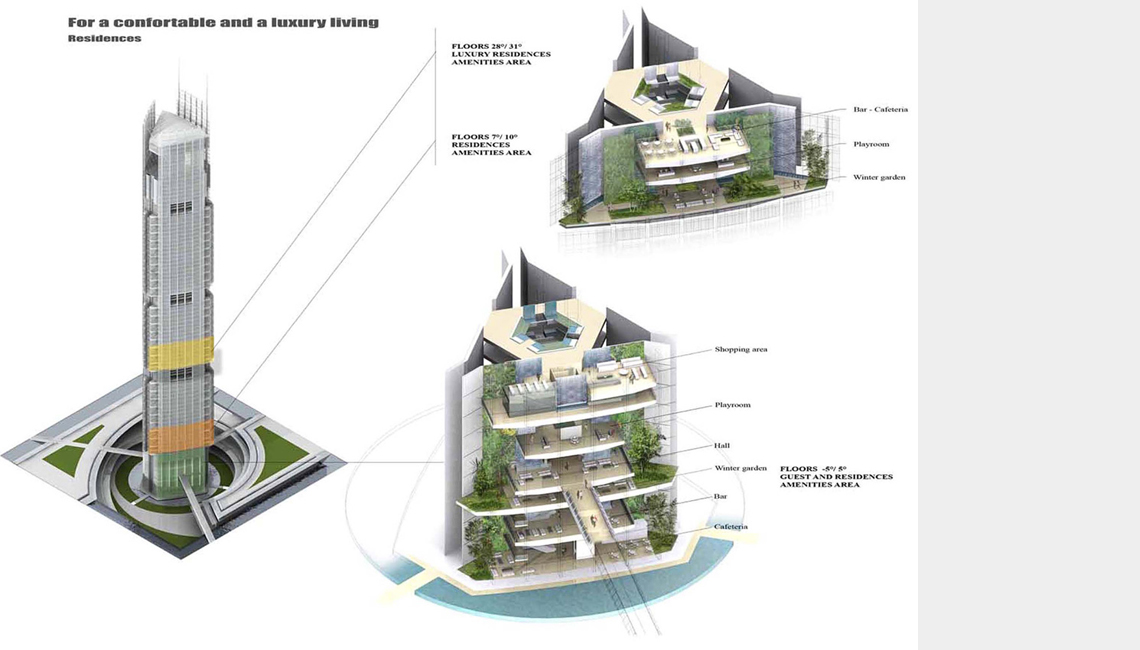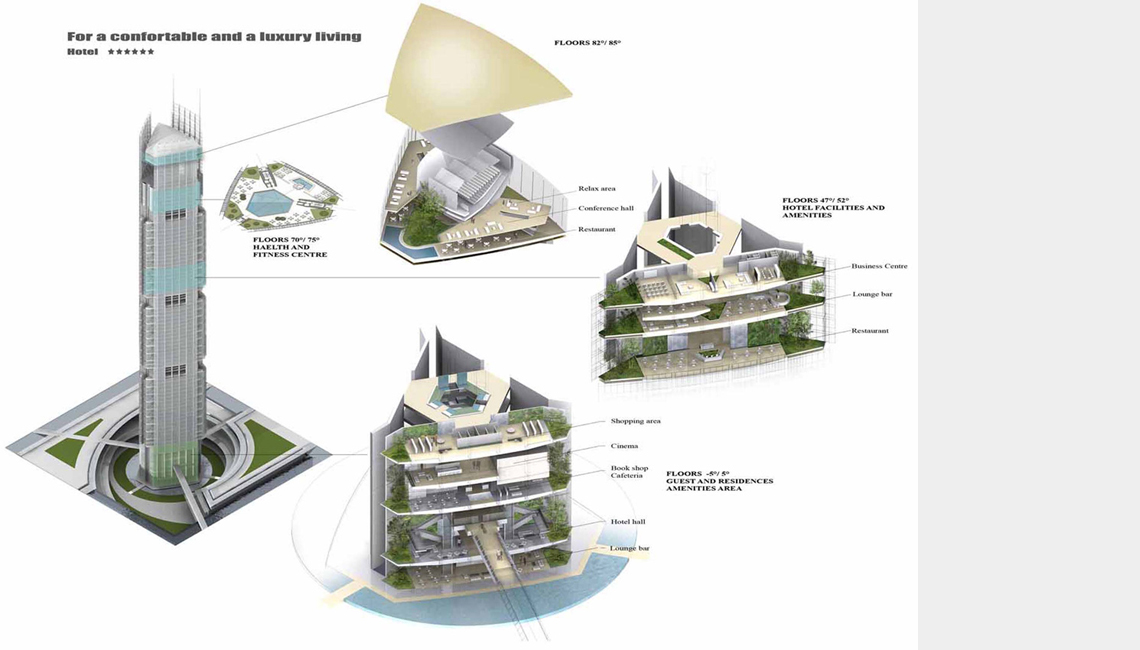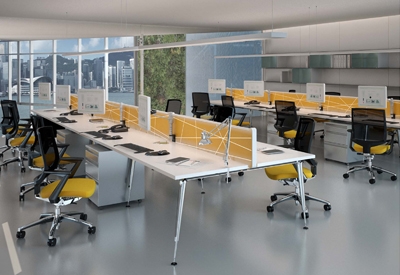Da Vinci Tower
The Da Vinci Tower takes its shape as an organically structured system in which various integrated and complemented functions interact with each other. The perfect combination of art and science, which characterizes Leonardo’s unique observation of nature and creativity and placed him always ahead of his contemporaries, is the underlying theme that links all the different ways in which the building is used. In-depth bioclimatic studies and a constant, close relationship with the environment and the peculiarities of the site have enabled a series of planning devices which allow the building to be managed as an organism. Like in a self-sufficient system, its different parts interact in an ideal way allowing a better quality of life and energy saving compared to conventional buildings of equal volume. In fact the tower, beyond producing the quantity of energy needed for its own requirements, generates a 30% more of energy that can be supplied to the local energy network. The natural engine at the heart of the Tower’s system is powered by wind, vegetation and water. The Tower has been designed with an exposure to sunlight; the whole façade is equipped with integrated photovoltaic systems and units to produce wind power. Moreover, the inner system of empty spaces is specifically designed to fully make use of natural ventilation (the mechanical one is only used in exceptional cases). A system for gathering rainwater and damp on the façade – working in combination with other systems as well – helps in making the Tower a great source of energy. The residential area and the accommodation facilities are endowed with several areas for leisure, entertainment and sports. A SPA, a restaurant, playgrounds, facilities for associations and cultural activities all contribute to making the environment inside the Tower particularly comfortable. The typical social and cultural aspect of the main “piazza” (square) that is found in the Italian urban environment is recreated. The project sees a cultural reference in Leonardo’s style and works. But it wishes to go beyond this link with one of Italy’s most creative geniuses and reach out to new planning techniques, an inspiration to achieve an always more sustainable architecture.
{slider Bioclimatic Feature|closed}
60% Self-electric Powered
80% Energy Saving
15% Double Skin
30% Solar Protection and Passive System
20% Natural Ventilation and Bio Purification
15% Geo-termic system
Renewable Energy Contribute
Solar Powered 35%
Wind Powered 25%
Air Bio Purification -20%
Geo Termic System -15%
- The skycraper is crossed from the wind in three points. Each part is high three plans.
- The particular shape of the section, where the wind get into the skycraper,produces an effect of acceleration doubling the entrance speed (Venturi effect).
- The system, composed from three horizontal axis wind turbine and a vertical axis one, is activated from the power of the wind.
- The connection section between the "wind floor" and the vertical central empty space produces in the external ventilated double skin and in the same vertical space a natural effect of upward aspiration (chimney effect).
- In the center of the skycraper are positionated three grate spirals that turn thanks to the upward flows.
- The presence of ATU (air treatment unity) in the tecnical plans, under the "bio floors", allow the dehumidification of external air that is diffused in the inside subsequently.
- The dehumidificated air is later bio-purified and cooled from hydrophonic systems (biowall). The wall is a natural air system wich remove VOCs and CO2 from the surrounding atmosphere.
- The great spyral helps to push upper the air that comes from the "bio floors" diffusing it in the places around.
- The air comes from the common spaces passes through private spaces (apartaments, offices, hotel) and than is expelled passing inside the ventilated double skin.
- The natural upward effect of the double skin (chimney effect) expells outside the air that comes from the privat spaces.
{/sliders}

